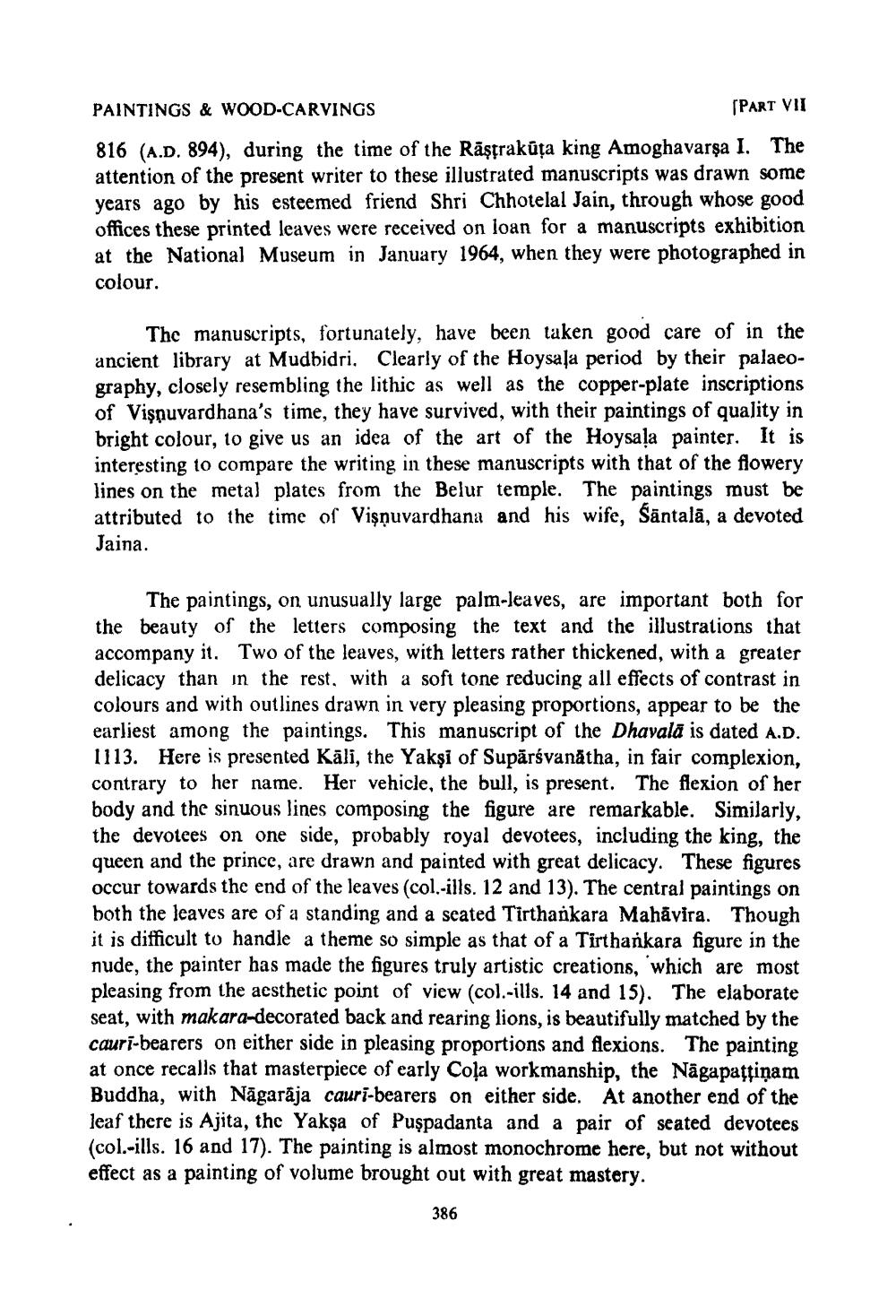________________
PAINTINGS & WOOD-CARVINGS
[PART VII 816 (A.D. 894), during the time of the Rāşțrakūța king Amoghavarsa I. The attention of the present writer to these illustrated manuscripts was drawn some years ago by his esteemed friend Shri Chhotelal Jain, through whose good offices these printed leaves were received on loan for a manuscripts exhibition at the National Museum in January 1964, when they were photographed in colour.
The manuscripts, fortunately, have been taken good care of in the ancient library at Mudbidri. Clearly of the Hoysala period by their palaeography, closely resembling the lithic as well as the copper-plate inscriptions of Vişnuvardhana's time, they have survived, with their paintings of quality in bright colour, to give us an idea of the art of the Hoysaļa painter. It is interesting to compare the writing in these manuscripts with that of the flowery lines on the metal plates from the Belur temple. The paintings must be attributed to the time of Vişnuvardhana and his wife, Santalā, a devoted Jaina.
The paintings, on unusually large palm-leaves, are important both for the beauty of the letters composing the text and the illustrations that accompany it. Two of the leaves, with letters rather thickened, with a greater delicacy than in the rest, with a soft tone reducing all effects of contrast in colours and with outlines drawn in very pleasing proportions, appear to be the earliest among the paintings. This manuscript of the Dhavalā is dated A.D. 1113. Here is presented Kāli, the Yakşi of Supārsvanātha, in fair complexion, contrary to her name. Her vehicle, the bull, is present. The flexion of her body and the sinuous lines composing the figure are remarkable. Similarly, the devotees on one side, probably royal devotees, including the king, the queen and the prince, are drawn and painted with great delicacy. These figures occur towards the end of the leaves (col.-ills. 12 and 13). The central paintings on both the leaves are of a standing and a seated Tirthankara Mahāvira. Though it is difficult to handle a theme so simple as that of a Tirthankara figure in the nude, the painter has made the figures truly artistic creations, which are most pleasing from the aesthetic point of view (col.-ills. 14 and 15). The elaborate seat, with makara-decorated back and rearing lions, is beautifully matched by the cauri-bearers on either side in pleasing proportions and flexions. The painting at once recalls that masterpiece of early Coļa workmanship, the Nägapațțiņam Buddha, with Nāgarāja cauri-bearers on either side. At another end of the leaf there is Ajita, the Yakşa of Puşpadanta and a pair of seated devotees (col.-ills. 16 and 17). The painting is almost monochrome here, but not without effect as a painting of volume brought out with great mastery.
386




